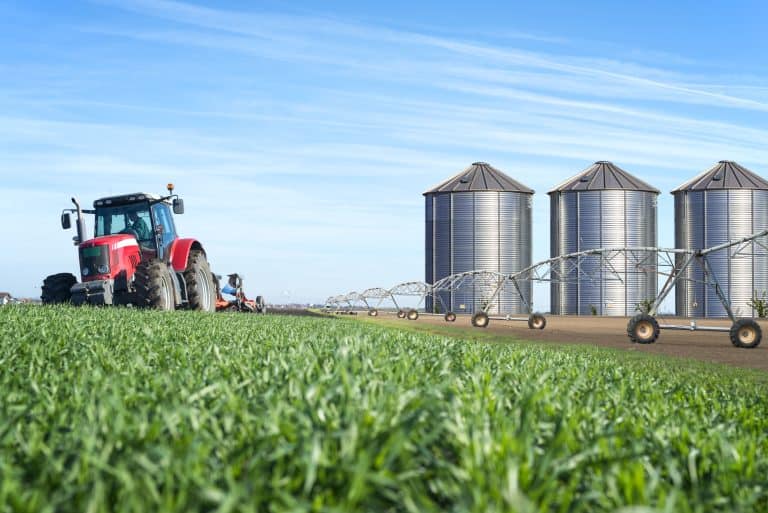Climate change is an issue that affects our planet Earth, and everyone should strive to reduce their carbon footprint. Various strategies have been implemented to mitigate climate change, including Carbon Capture, Utilization, and Storage (CCUS) and Enhanced Rock Weathering (ERW). Both strategies aim to reduce greenhouse gas emissions, but how can they complement each other to achieve the best results? In this article, we will dive into the potential synergies between ERW and CCUS and how they can help mitigate climate change. Delve into the potential synergies between these two approaches and learn how they can help address climate change.
How can Enhanced Rock Weathering and Carbon Capture, Storage and Utilization work together?
The onset of the Industrial Revolution in the 18th century has contributed to the acceleration of greenhouse gas (GHG) emissions, driving climate change and its collateral damage.
Today, we face an urgent need to mitigate those emissions. There are different ways to achieve this, and several are being explored worldwide, including Enhanced Rock Weathering (ERW) and Carbon Capture, Utilization, and Storage (CCUS).
These two strategies have the potential to complement each other in mitigating climate change. But how exactly does this work? To begin understanding this, firstly it is necessary to comprehend how these technologies work.
Enhanced Rock Weathering is a procedure where natural minerals such as glauconite, serpentine, olivine, and basalt are crushed, spread over terrestrial or aquatic surfaces, and exposed to CO2 in the atmosphere.
This introduces a chemical reaction that converts CO2 to bicarbonate, which allows it to dissolve, subsequently into carbonates, and deposit carbon in the ocean’s sediments.
ERW has enormous potential as a negative emission technology since it can lower atmospheric carbon levels and simultaneously increase agricultural productivity by adding minerals to soils.
However, this technology usually requires vast amounts of minerals to be crushed and transported, which in turn requires a lot of energy.
That is why Carbon Capture, Utilization and Storage can then provide an ideal partner for ERW in mitigating the carbon emissions associated with mineral crushing, transport, and spreading.
Carbon Capture, Utilization, and Storage (CCUS) technology captures carbon dioxide from industrial processes such as cement production, refinery processes, and fossil fuel burning.
The captured carbon can then be repurposed to produce chemicals, fuels, and building materials, or alternatively stored underground in subsurface geological formations to prevent CO2 emissions into the atmosphere.
The combination of ERW and CCUS also has other benefits that can help the fight against the main causes of climate change.
The benefits of ERW and CCUS in the fight against the climate change
Carbon Capture Utilization and Storage technology, in partnership with ERW, can capture the CO2 emitted by Enhanced Rock Weathering and transport it to be utilized for other industrial purposes.
Furthermore, the captured CO2 can be stored underground, eliminating its release into the atmosphere. According to Jones et al., 2019, incorporating CCUS technology with ERW would require the capture of small amounts of CO2 associated with mining, processing, and transporting minerals.
By capturing the CO2, we could reduce the carbon footprint of the whole ERW process and maximize its efficacy in mitigating climate change.
The combination of ERW and CCUS also provides a reliable and sustainable solution for biofuel production. Biofuels, produced from organic matter such as trees or crops, and agricultural waste, have attracted attention as a sustainable alternative to fossil fuels.
However, biofuels have a carbon footprint, particularly during processing, combustion, and transport, which must be reduced to eliminate their negative environmental impact.
Enhanced Rock Weathering, combined with Carbon Capture Utilization and Storage, can effectively mitigate these emissions by offsetting biofuel carbon dioxide emissions with the CO2 captured by CCUS and stored underground, making biofuels more sustainable.
In terms of reducing atmospheric carbon concentrations, the combination of ERW and CCUS would address diverse sources of CO2 emissions, including industrial process emissions, transportation, and power generation.
Moreover, by combining the two technologies, we can lead the way in developing a circular carbon economy. The carbon economy will be instrumental in mitigating both GHG emissions and the effects of climate change.
Thus, by coupling ERW with CCUS, we can increase the amount of carbon sequestered in our shores and soil, delay the effect of climate change, and reduce the amount of greenhouse gases in the atmosphere collectively.
ERW and CCUS are tools that complement each other in the task of mitigating the climate change effects, thus is important to invest in both of them
In conclusion, the constant rise in GHG emissions raises concerns about our environment, food security, and social welfare. In this context, ERW and CCUS offer potential complementary strategies for mitigating climate change and greenhouse gas emissions.
That is because combining ERW with CCUS enables the reduction of carbon emissions from various sectors and helps in accomplishing carbon-negative economies.
However, effective integration of the two technologies, global and local regulation, and public acceptance, will be crucial to making their collective potential a reality.
Considering that, it is necessary that governments, industries, and researchers to continue to invest in both ERW and CCUS to reduce the effects of climate change and make the world a better place for future generations.

